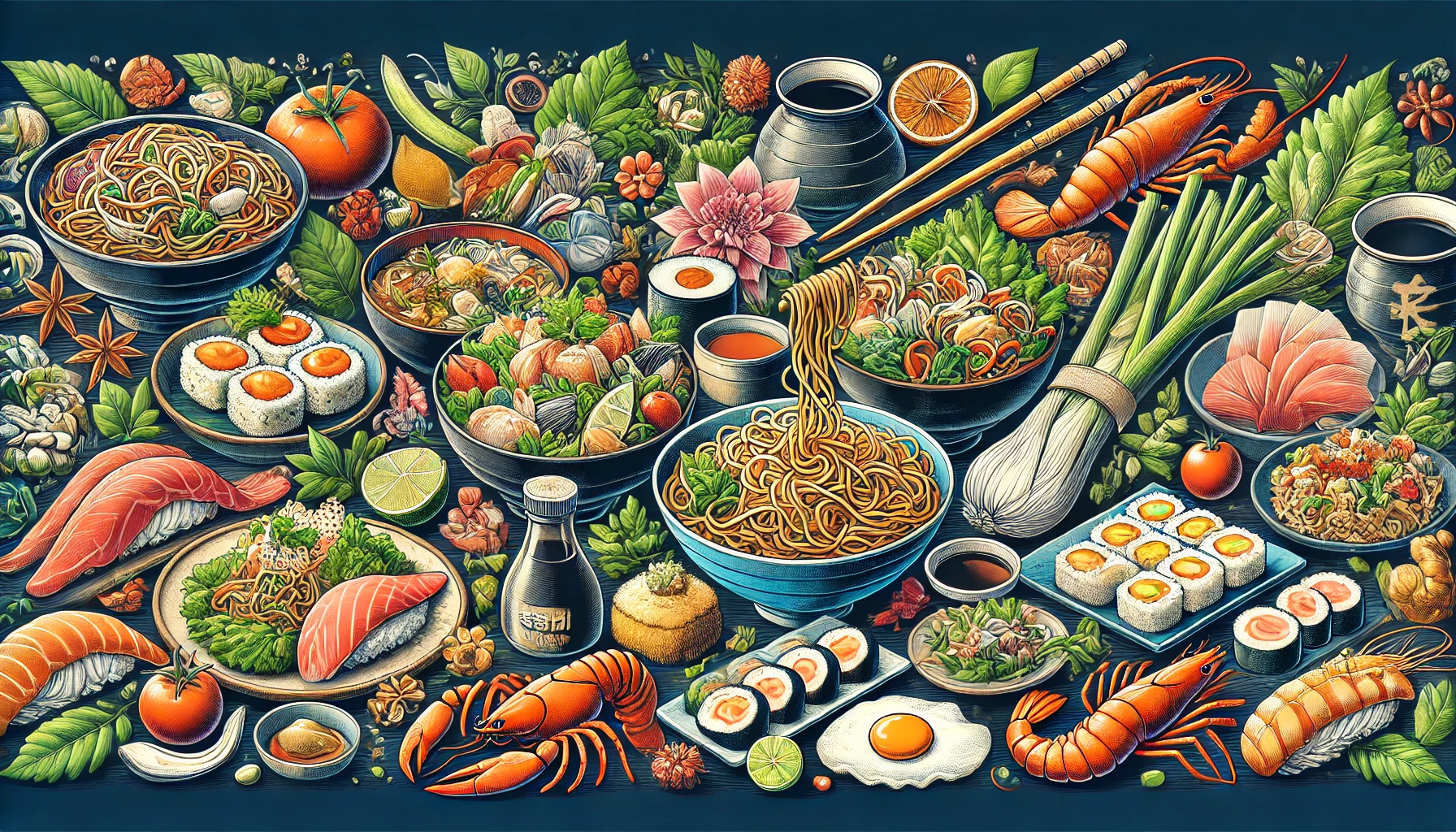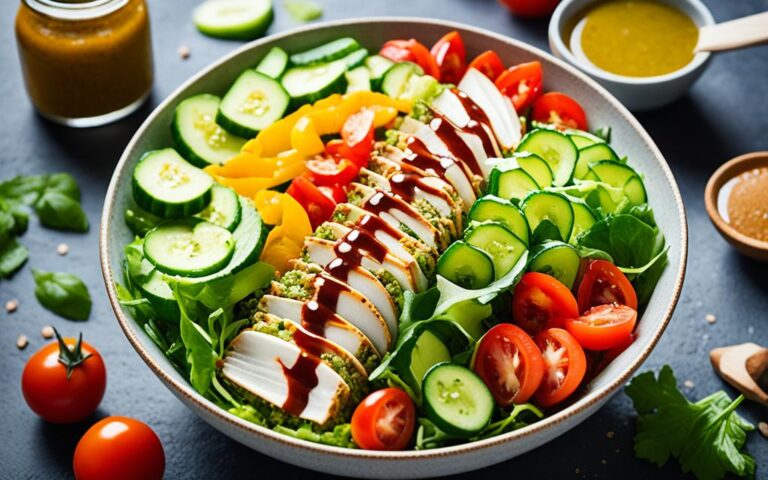The Art of Japanese Cuisine: Flavours Beyond Sushi
Views: 3
Japanese cuisine is celebrated globally for its delicate flavors, artful presentation, and meticulous attention to detail. While sushi has become synonymous with Japanese food in many parts of the world, the rich tapestry of Japanese culinary traditions extends far beyond the realms of sushi rolls and sashimi. This exploration of Japanese cuisine will delve into various dishes that showcase the diversity and depth of flavors in Japanese cooking, with a special focus on the beloved katsu curry.
Sushi: The Icon of Japanese Cuisine
No discussion of Japanese food would be complete without mentioning sushi, the iconic dish that has captured the hearts of food enthusiasts around the world. Sushi, which originated as a way to preserve fish in fermented rice, has evolved into a refined culinary art form. The harmony of vinegared rice, fresh seafood, and other ingredients such as vegetables and eggs creates a symphony of flavors that is both simple and sophisticated.
However, sushi is just the tip of the iceberg when it comes to Japanese cuisine. To truly appreciate the breadth of Japanese cooking, one must explore the myriad other dishes that embody the essence of Japanese culture. Sushi’s global popularity often overshadows other traditional Japanese dishes, but in Japan, the cuisine is a harmonious blend of various cooking techniques, regional ingredients, and cultural influences, each contributing to the unique character of Japanese food.
Katsu Curry: A Fusion of East and West
One of the most popular dishes in Japan, particularly among younger generations, is katsu curry. This dish is a brilliant example of how Japanese cuisine has embraced and adapted foreign influences. Katsu curry combines a breaded and deep-fried pork or chicken cutlet (known as “katsu”) with a rich, mildly spiced curry sauce served over steamed rice. The dish is hearty, comforting, and utterly satisfying.
The origin of katsu curry can be traced back to the early 20th century, during a period when Japan was increasingly exposed to Western culinary traditions. The curry sauce itself is derived from Indian curry, introduced to Japan by the British. Over time, the Japanese adapted the recipe to suit their palate, resulting in a curry that is less spicy and more savory. The combination of the crispy katsu and the flavorful curry sauce creates a unique dish that has become a staple in Japanese homes and restaurants alike.
For those interested in recreating this dish at home, a simple katsu curry recipe would involve preparing the curry sauce using a blend of curry powder, onions, carrots, and potatoes, while the katsu is made by breading and frying the meat to a golden crisp. When served together over a bed of fluffy rice, the result is a deliciously comforting meal that captures the essence of Japanese comfort food. The balance of flavors in katsu curry—savory, slightly sweet, and umami-rich—makes it a dish that appeals to both Japanese and international palates, embodying the concept of “yōshoku,” or Western-influenced Japanese cuisine.
Ramen: The Soul-Warming Noodle Soup
Another dish that showcases the depth of Japanese cuisine is ramen, a noodle soup that has gained immense popularity both in Japan and internationally. Ramen comes in many varieties, with the flavor of the broth being the most defining characteristic. The four primary types of ramen are shoyu (soy sauce-based), miso (fermented soybean paste-based), shio (salt-based), and tonkotsu (pork bone-based). Each type of broth offers a distinct taste experience, from the light and clear shio ramen to the rich and creamy tonkotsu ramen.
The noodles in ramen are typically made from wheat, with a firm and chewy texture that complements the broth. Ramen is often garnished with a variety of toppings, including slices of pork, soft-boiled eggs, nori (seaweed), and green onions. The result is a bowl of ramen that is both flavorful and nourishing, making it a favorite comfort food in Japan.
Ramen’s popularity has also led to regional variations across Japan, with each area offering its unique take on the dish. For example, Hokkaido is known for its rich miso ramen, while Kyushu is famous for its tonkotsu ramen, made from a creamy pork bone broth. These regional differences add another layer of complexity to ramen, making it a dish that can be explored and enjoyed in countless ways.
Tempura: The Art of Frying
Tempura is another iconic Japanese dish that highlights the Japanese mastery of cooking techniques. Tempura involves lightly battering seafood, vegetables, or even mushrooms, and frying them to a delicate crisp. The batter is made from cold water, flour, and sometimes egg, and is known for its light, airy texture. The key to perfect tempura is frying the ingredients at just the right temperature, so they remain tender on the inside while being perfectly crispy on the outside.
Tempura is often served with a dipping sauce made from soy sauce, dashi (a type of Japanese stock), and mirin (a sweet rice wine), which adds a savory umami flavor to the dish. The simplicity of tempura allows the natural flavors of the ingredients to shine, making it a popular dish in Japanese cuisine.
The origins of tempura date back to the 16th century when Portuguese missionaries introduced the concept of frying food in Japan. Over the centuries, the Japanese refined the technique, creating the delicate and refined tempura that is now a hallmark of Japanese cuisine. The emphasis on fresh, seasonal ingredients and the precise cooking technique exemplifies the Japanese culinary philosophy of letting the natural flavors of the ingredients take center stage.
Okonomiyaki: The Savory Pancake
For those who enjoy savory dishes with a bit of creative flair, okonomiyaki is a must-try. Often referred to as a Japanese savory pancake, okonomiyaki is made from a batter of flour, eggs, shredded cabbage, and a variety of other ingredients such as pork, seafood, and vegetables. The name “okonomiyaki” translates to “grill as you like,” reflecting the dish’s customizable nature.
Okonomiyaki is typically cooked on a hot griddle, with the ingredients mixed into the batter and then grilled to perfection. It is often topped with a tangy okonomiyaki sauce, mayonnaise, bonito flakes, and nori. The result is a flavorful and satisfying dish that is both fun to make and eat.
The dish is particularly popular in the Kansai region, where it is often enjoyed as street food or at casual restaurants. Hiroshima-style okonomiyaki is another popular variation, which layers the ingredients rather than mixing them into the batter. This regional diversity in preparation methods further enriches the culinary landscape of Japan.
Yakitori: Grilled Perfection on a Skewer
Yakitori, or grilled chicken skewers, is another staple of Japanese cuisine that offers a simple yet flavorful dining experience. Yakitori is typically made by skewering bite-sized pieces of chicken, often including a variety of cuts such as thigh, breast, and even offal, before grilling them over charcoal. The skewers are usually seasoned with either salt (shio) or a savory-sweet sauce called tare, which is made from soy sauce, mirin, sake, and sugar.
What makes yakitori special is the careful attention given to grilling each skewer to perfection. The charcoal imparts a smoky flavor that enhances the taste of the chicken, while the careful grilling ensures that each piece is tender and juicy. Yakitori is often enjoyed at izakayas, or Japanese pubs, where it is served alongside a variety of other small dishes and drinks. This dish exemplifies the Japanese approach to cooking, where simplicity and quality ingredients are key to creating delicious food.
Japanese Sweets: A Delicate Ending to a Meal
No exploration of Japanese cuisine would be complete without mentioning the delicate and beautifully crafted Japanese sweets, known as wagashi. Wagashi are traditional Japanese confections often served with tea, especially during the tea ceremony. These sweets are not only delicious but also visually stunning, with each piece designed to reflect the beauty of nature and the changing seasons.
Common ingredients in wagashi include sweetened red bean paste, rice flour, and agar-agar (a gelatinous substance made from seaweed). One popular type of wagashi is mochi, a chewy rice cake filled with sweet red bean paste or other fillings. Another is dorayaki, a sweet pancake sandwich filled with red bean paste. These sweets offer a delicate balance of flavors and textures, providing a perfect ending to a Japanese meal.
Conclusion
Japanese cuisine is a rich and diverse culinary tradition that offers much more than just sushi. From the comforting warmth of katsu curry to the soul-nourishing flavors of ramen, the delicate crispness of tempura, the customizable creativity of okonomiyaki, and the smoky allure of yakitori, there is a world of Japanese flavors waiting to be explored. Whether you’re dining out or trying your hand at a katsu curry recipe at home, the art of Japanese cuisine offers something for every palate, inviting you to experience the harmony and balance that define this remarkable culinary tradition.
In addition to these savory delights, the sweet world of wagashi provides a delicate contrast, showcasing the artistry and seasonal awareness that permeates all aspects of Japanese culture. Each dish, whether a hearty katsu curry or a delicate piece of mochi, tells a story of Japan’s history, geography, and values, making Japanese cuisine a truly immersive experience. So, the next time you think of Japanese food, remember that there is so much more to explore beyond sushi, with each dish offering a unique window into the heart of Japan.
Image : https://unsplash.com/photos/noodles-topped-with-beef-in-bowl-2TjDelq95rc


